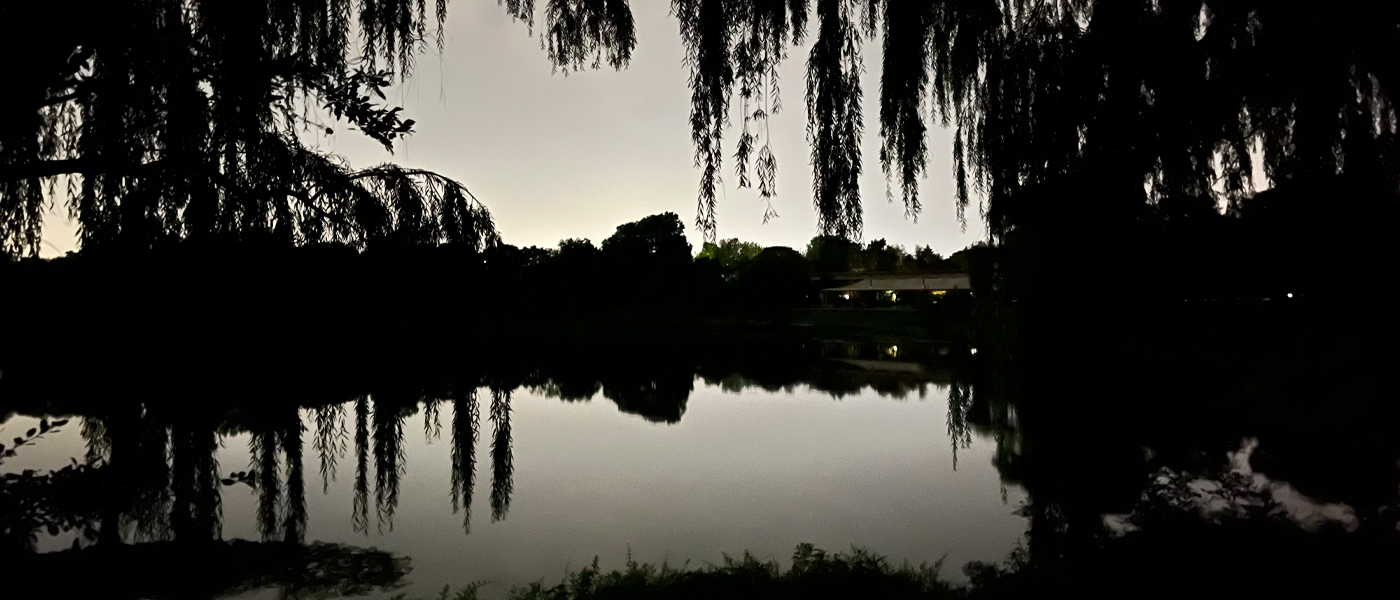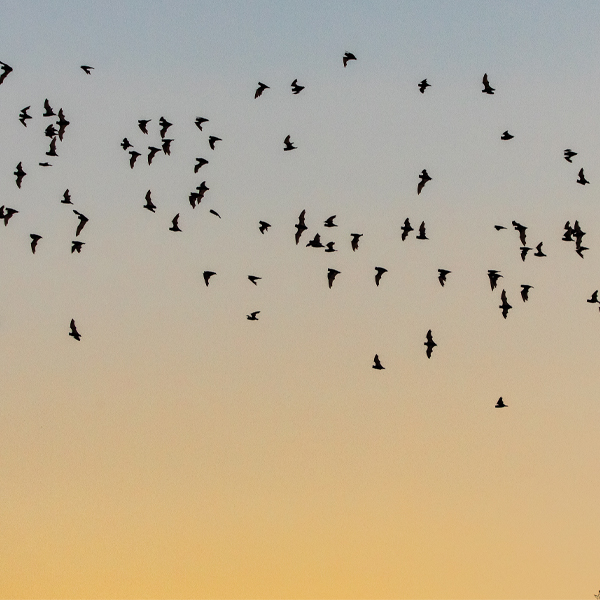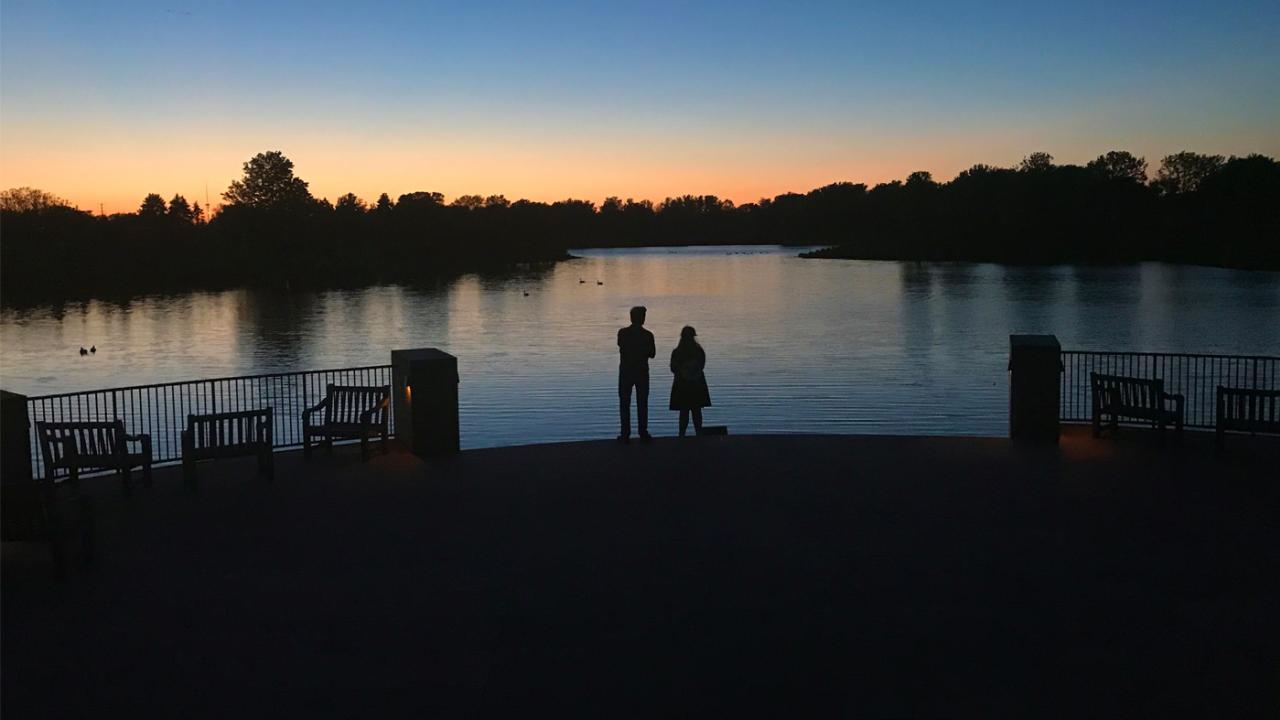The night was warm and still when the bats flew over the lake.
On the Serpentine Bridge, 16 people—the only visitors at the 385-acre Chicago Botanic Garden—watched the bats hunt on Evening Island for night-flying insects and a little honeysuckle nectar to wash them down.
Another side of the Garden emerges after the front gates close for the night—one in which the natural world is less colorful but more dramatic. In the dark, your senses sharpen. You look at blooms in a new way when they are lit by lightning bugs instead of the sun.

Photo courtesy of Cathi Fremer

You can find five species of bats at the Garden.
The art installation known as The Rookery, on a recent evening. Photo courtesy of Lizzie Zivin
“There’s something magical about being in the Garden at night,” said Elisabeth Aguilera, assistant horticulturist. “It’s just such a unique perspective.”
Aguilera recently led a sold-out Moon Garden Plant Walk that included areas such as The Rookery art installation near Evening Island; the route was roughly 2 miles long. She’s leading another night walk on October 5.
On this summer’s walk, Aguilera gave tips on what to add to your own moon garden:
Glowing hibiscus on a recent moon walk at the Garden. Photo courtesy of Cathi Fremer
White flowers
White flowers glow in the moonlight; so do plants with silver or variegated leaves, including lamb’s ear and hosta. Plant them in drifts for an especially dramatic look. Popular choices include mums, daisies, and climbing hydrangea.
A night-blooming water lily, red flare, at the Garden. Photo courtesy of Cathi Fremer
Night bloomers
The walk also featured night-blooming plants in the Garden, such as evening primrose and night-scented tobacco plant. Favorites included the red flare water lily.
Sweet-scented tobacco 'Nicotiana sylvestris'
Creature features
Fragrant, nectar-rich plants attract bats and other nocturnal wildlife—especially night-blooming plants. Try providing food, water, and shelter for bats. And to help attract lightning bugs, don’t cut your grass. Allow plant clippings and fallen leaves to accumulate.
Aguilera starts her day job at 6 a.m., when she watches the sunrise from the Waterfall Garden. The sight, smells, and sounds of the late-night walk from 9 to 10:30 p.m.—including large croaking toads—took her to a different place.
“It was invigorating,” she said. “I had so much fun.”

